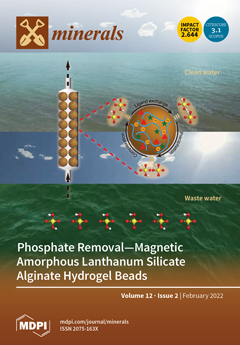The combustion of fossil fuels from the input of oil refineries, power plants, and the venting or flaring of produced gases in oil fields leads to greenhouse gas emissions. Economic usage of greenhouse and flue gases in conventional and unconventional reservoirs would not
[...] Read more.
The combustion of fossil fuels from the input of oil refineries, power plants, and the venting or flaring of produced gases in oil fields leads to greenhouse gas emissions. Economic usage of greenhouse and flue gases in conventional and unconventional reservoirs would not only enhance the oil and gas recovery but also offers CO
2 sequestration. In this regard, the accurate estimation of the interfacial tension (IFT) between the injected gases and the crude oils is crucial for the successful execution of injection scenarios in enhanced oil recovery (EOR) operations. In this paper, the IFT between a CO
2/N
2 mixture and n-alkanes at different pressures and temperatures is investigated by utilizing machine learning (ML) methods. To this end, a data set containing 268 IFT data was gathered from the literature. Pressure, temperature, the carbon number of n-alkanes, and the mole fraction of N
2 were selected as the input parameters. Then, six well-known ML methods (radial basis function (RBF), the adaptive neuro-fuzzy inference system (ANFIS), the least square support vector machine (LSSVM), random forest (RF), multilayer perceptron (MLP), and extremely randomized tree (extra-tree)) were used along with four optimization methods (colliding bodies optimization (CBO), particle swarm optimization (PSO), the Levenberg–Marquardt (LM) algorithm, and coupled simulated annealing (CSA)) to model the IFT of the CO
2/N
2 mixture and n-alkanes. The RBF model predicted all the IFT values with exceptional precision with an average absolute relative error of 0.77%, and also outperformed all other models in this paper and available in the literature. Furthermore, it was found that the pressure and the carbon number of n-alkanes would show the highest influence on the IFT of the CO
2/N
2 and n-alkanes, based on sensitivity analysis. Finally, the utilized IFT database and the area of the RBF model applicability were investigated via the leverage method.
Full article





